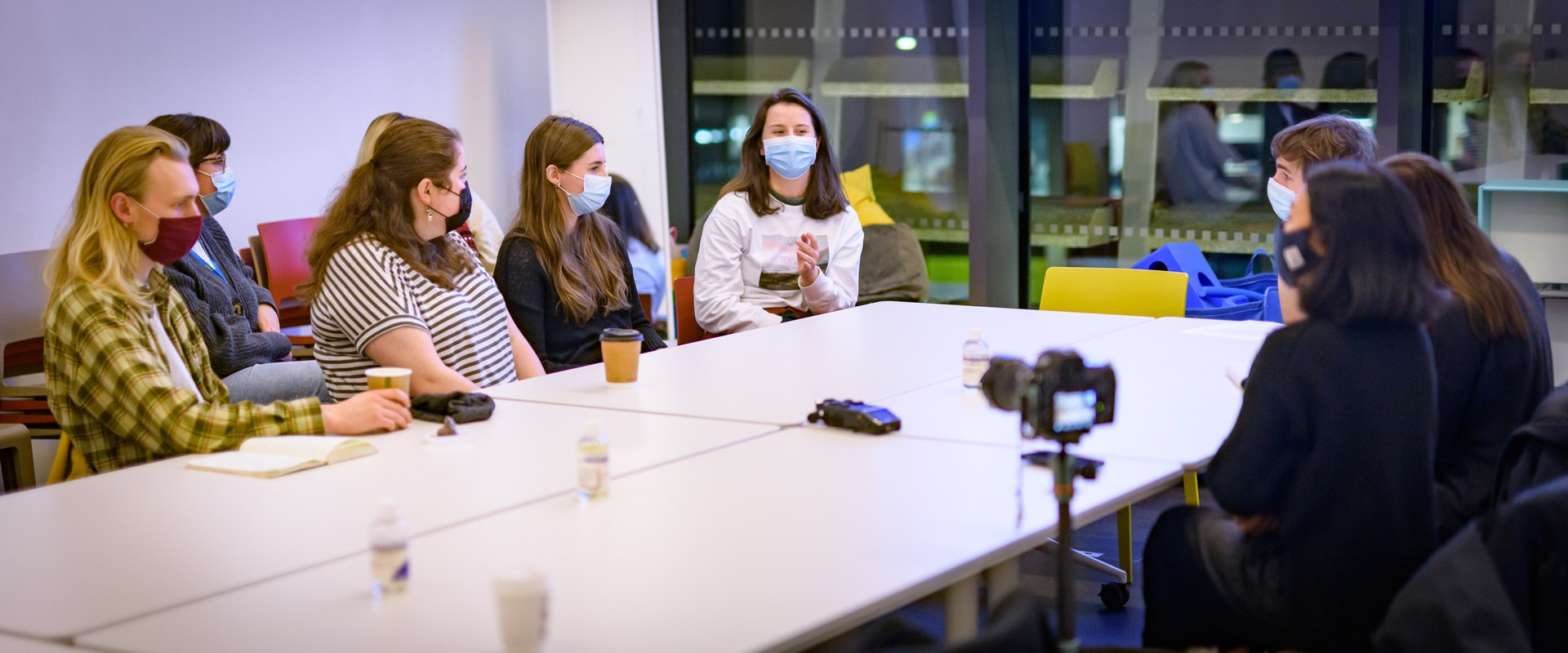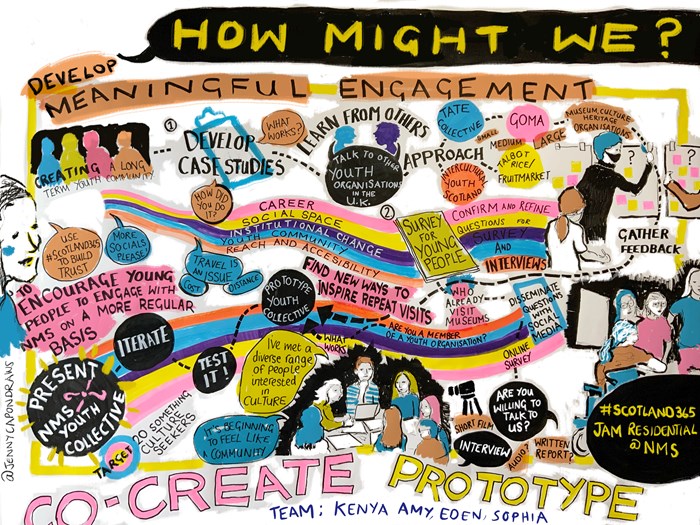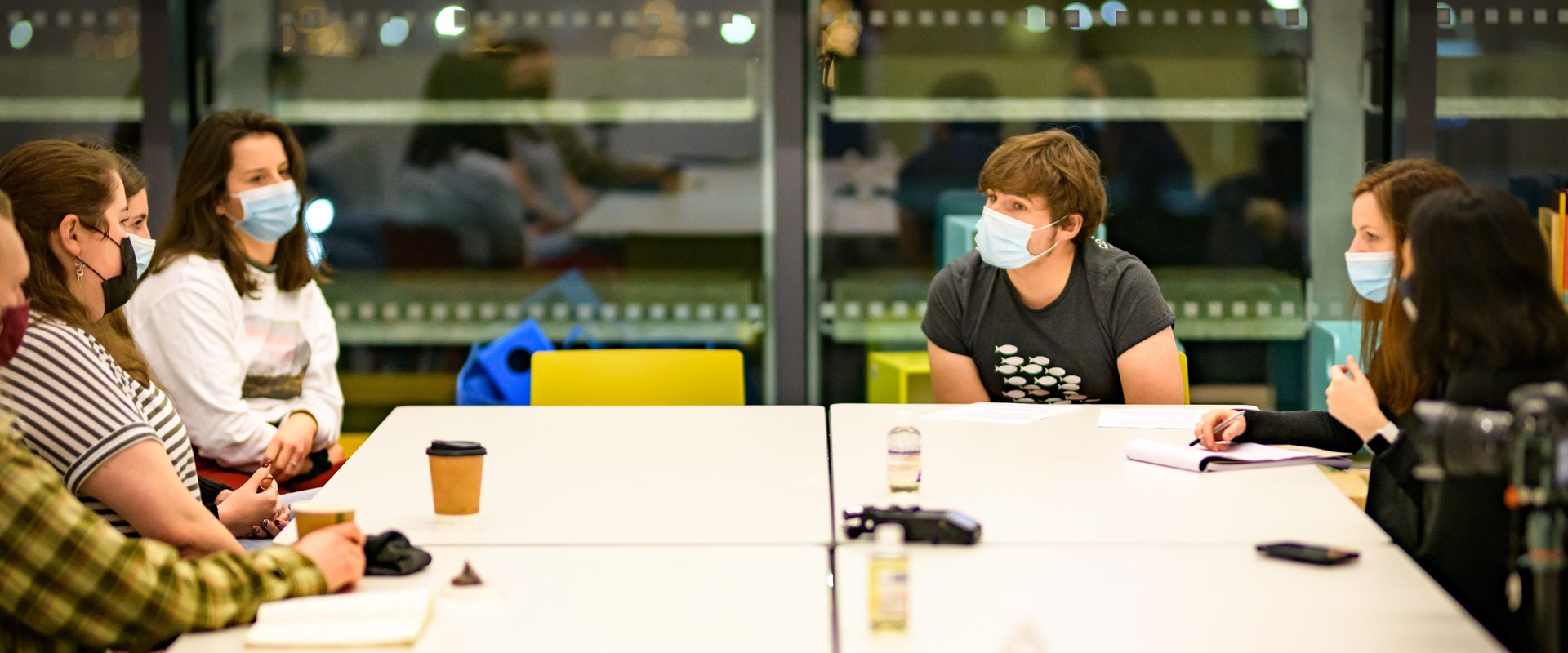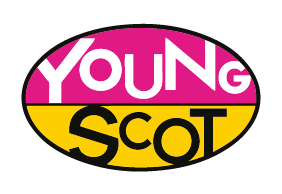Key in a search term below to search our website.
Key in a search term below to search our website.

By listening to the voices of young people National Museums Scotland recognised the need to recruit a national youth engagement team to develop a relevant programme of work and test a range of different engagement methods.
Working with one of our consortium partners, Young Scot, a team of dedicated young people signed up as volunteers and took on the task of exploring the needs of their peers by producing ideas and prototypes.
Featured below is the Meaningful Engagement project which was delivered by four young volunteers.

Illustration of the Meaningful Engagement team co-design process.
How Might We...
encourage young people to engage with us on a more regular basis and explore and prototype new ways to inspire repeat engagement with National Museums Scotland for twenty-something *Culture seekers?
Culture seekers are...
*Young people who identified as being highly motivated to visit museums and engage with heritage learning.
Thanks to our young people
Amy, Eden, Kenya, and Sofia.
This project sub-group had initially been titled “Loyalty Schemes”, however, during the early Explore workshop sessions the young people realised through discussions and interrogation of the brief, that this didn’t fully communicate their aims. Therefore, a decision was taken to re-name the sub-group to Meaningful Engagement, to communicate the long-term ambitions of inspiring repeat engagement in a meaningful way.
“I have been able to see more of the behind the scenes of the museum and heritage sector. It has enabled me to give my opinions about how museums engage with young people and how they can improve.
From undertaking research into other sector initiatives, the group started to highlight key challenges and opportunities in recognising best practice for youth engagement in the heritage sector. The group spoke widely about the potential to further engage culture seekers and to tap into the opportunity to allow young people to develop social networks, professional skills, and more tailored experiences, as well as tapping into social media to facilitate a continuous conversation.
During the Create phase the project group identified key themes to take forward, which formed the basis of future discussions and engagements. Theme areas identified:
Connecting to the project’s core objectives, creating a sense of community was top priority for the group. Encouraging a sense of ‘collectiveness’ with young people and an ability to get involved with programming opportunities.
Aligning to the first area, the group wanted to highlight opportunity to tap into the fun and social aspects of the museum. If young people feel welcome and relaxed in the space, more regular engagement is likely to follow.
Development and progression opportunities felt like an essential element of a strategy for the project group, ensuring value is offered for the young people’s time and an ability to be recognised based on longer-term involvement.
Ensuring that the museum offers a place that accommodates the needs of all young people was another top priority, the group wanted the museum to engage with a variety of different young people and through different formats; digital and in-person.
The group were hopeful to implement a strategy that would nurture a sense of openness and learning, with a place for young people to get involved with topics that are important to them and for NMS to build youth voice into its core practices.
During the residential weekend, the project group started to develop case study formats which would represent each of the theme areas to showcase what’s been done well across the cultural and heritage sector and what learnings can be taken forward.
Conducting case studies and interviews – Three groups were identified to conduct interviews with. Organisational staff and young people were engaged with from each of the following:
Dundee V&A
National Museum of Wales
Gallery of Modern Art (GoMA)
Outputs from the case studies provided the project group with an understanding of the opportunities that exist. In practice, these case studies reinforced the young people’s initial discussions and showcased how achievable they were, seeing similar ideas being actioned in organisations nationally and beyond.
Based on the case study outputs, the project group developed their youth manifesto. This manifesto promotes an opportunity for long-term engagement with young people, which is more than just a ‘youth club’, it’s mutually beneficial to both the museums and the youth collective- with the collective having access to exhibition space, control to decide themes of exhibitions and collaborated with staff. Skills like accessioning objects, co-curating and engaging with artists means the collective could be exposed to the realities of having an exhibition - with the museum reflecting the collective in key decision-making.

Throughout the process, the young people developed their knowledge and skills, honing insights and establishing an understanding of the wider context their project sits within. Through engagements with internal staff, external organisations and wider groups of young people insights have been strengthened to represent a range of views and needs.
With this, the Meaningful Engagement project group highlight some key reflections and priorities related to their project aim to consider moving forward.

